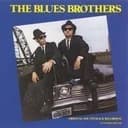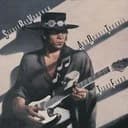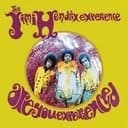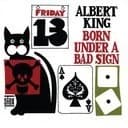The A Blues Scale holds a special place in guitar-based music, primarily because A is one of the most guitar-friendly keys—offering open string resonance and easy position playing across the neck. This practical advantage has led countless guitarists to develop their blues vocabulary in A, from acoustic Delta blues players to electric rock virtuosos. The scale's formula (1-♭3-4-♭5-5-♭7-1) creates a structure where the D♯/E♭ blue note sits between the perfect 4th (D) and perfect 5th (E), generating a tritone interval against the root that produces characteristic blues tension. Historically, this "bent" note evolved from African musical traditions where precise Western pitch categorization didn't apply—singers and instrumentalists instead used vocal-like inflections and microtonal variations between notes. Understanding the A Blues Scale means recognizing that the notated D♯ is often performed as a fluid, expressive bend rather than a fixed pitch, capturing the human voice's emotional range in instrumental form. This approach to pitch as a continuum rather than discrete steps revolutionized Western popular music and remains essential to authentic blues performance.
Why A Blues is Guitar-Friendly
The A Blues Scale's dominance in guitar music stems from several practical factors that make it exceptionally playable. The key of A allows guitarists to utilize the open A string as a drone or pedal tone, creating a rich, resonant foundation for blues licks and riffs. Standard 12-bar blues progressions in A (A7-D7-E7) align perfectly with common guitar chord voicings and position playing, making it ideal for both rhythm and lead work. The scale patterns fall naturally under the fingers in the 5th position (5th-8th frets), where the most common "blues box" shape sits comfortably and allows for easy string bending. This ergonomic advantage has influenced generations of guitarists, from Robert Johnson's Delta blues recordings to Eric Clapton's "Layla" and beyond. When practicing the A Blues Scale on guitar, focus on bending the D♯ note up from D or down from E—this technique, impossible on piano but natural on guitar, exemplifies the scale's expressive potential. The scale also works beautifully with slide guitar in open A or open E tunings, where the blues scale notes align with harmonic overtones for a rich, singing tone quality that defined early blues recordings.
A Blues Scale in Different Genres
While rooted in traditional blues, the A Blues Scale has become foundational across multiple genres, each adapting it to unique stylistic contexts. In rock music, the scale powers classic solos from Led Zeppelin's "Since I've Been Loving You" to AC/DC's "Highway to Hell," where aggressive string bending and fast pentatonic runs create high-energy guitar work. Jazz musicians approach the scale differently, using it as one color in a broader harmonic palette—Miles Davis's "All Blues" demonstrates how blues scales integrate into modal jazz frameworks. Country guitarists incorporate A blues licks into chicken picking and hybrid picking techniques, blending blues phrasing with country twang. In funk and R&B, the A Blues Scale provides melodic material for horn sections and keyboard solos, often combined with chromatic approaches and rhythmic syncopation. Metal guitarists have embraced blues scale patterns, using them as launching points for faster, more aggressive phrasing while maintaining blues-rooted authenticity. The scale's versatility comes from its simplicity—six notes that work over dominant seventh chord progressions regardless of tempo, dynamics, or genre conventions.
Connecting Blues Scale to Other A Scales
Understanding how the A Blues Scale relates to other scales in A enriches your improvisational vocabulary and harmonic awareness. The closest relationship is with the A Minor Pentatonic Scale, which shares five notes with the blues scale—the difference being the added D♯ blue note. Many musicians treat these scales as interchangeable, adding the blue note for extra tension and removing it for smoother, more consonant phrases. The A Natural Minor Scale (A-B-C-D-E-F-G) provides a fuller harmonic context, containing all the blues scale notes plus B and F, allowing you to combine blues phrasing with more sophisticated melodic development. When improvising over A minor chord progressions, try alternating between the blues scale's raw simplicity and natural minor's expanded palette. The A Dorian mode (A-B-C-D-E-F♯-G) offers another excellent companion scale, with its major 6th (F♯) creating a brighter sound that contrasts beautifully with the blues scale's darker, more brooding character. Advanced players often create hybrid approaches, using blues scale patterns as rhythmic and melodic anchors while incorporating notes from these related scales for harmonic sophistication and unexpected melodic twists.
Practicing and Mastering A Blues
Developing authentic blues phrasing in A requires focused practice that goes beyond simply running scale patterns up and down. Start by internalizing the sound: listen extensively to blues masters like B.B. King, Albert King, and Buddy Guy playing in A, paying attention to how they approach the blue note, their rhythmic phrasing, and use of silence. Practice the scale slowly with deliberate string bends on the D♯, experimenting with quarter-tone bends, half-step bends, and whole-step bends to develop precise pitch control. Work on call-and-response patterns—play a short phrase, then "answer" it with a variation, mimicking the conversational quality of blues vocals. Develop your rhythmic vocabulary by practicing blues scale phrases over shuffle rhythms, straight eighths, and triplet feels, as blues exists as much in its rhythmic pocket as its melodic content. Create a practice routine that includes playing over 12-bar blues backing tracks in A, forcing yourself to navigate chord changes while maintaining melodic coherence. Record yourself improvising and listen critically—are you overusing certain licks? Are your phrases resolving effectively? Does your playing have emotional depth or is it mechanically running through patterns? The difference between competent and compelling blues playing lies not in technical facility but in your ability to tell a story with six simple notes.
Ready to explore more scales and deepen your understanding of music theory? Create a free account to track your progress, save your favorite scales, and access exclusive practice tools designed to accelerate your musical development.





